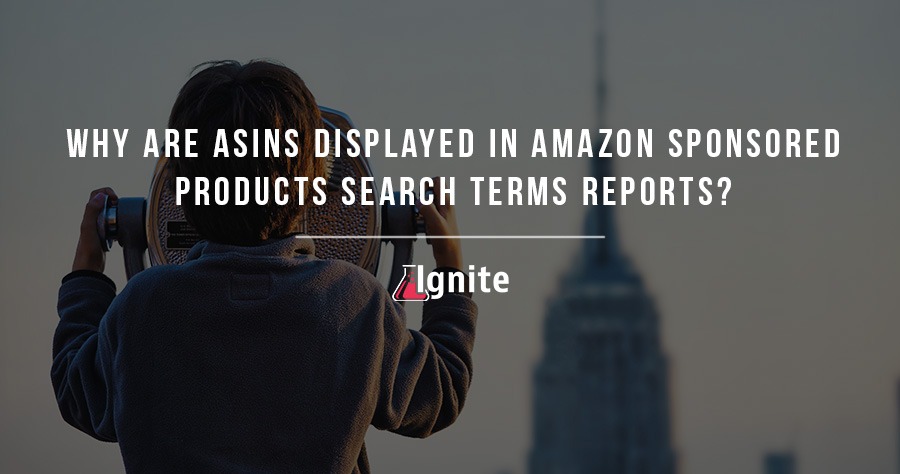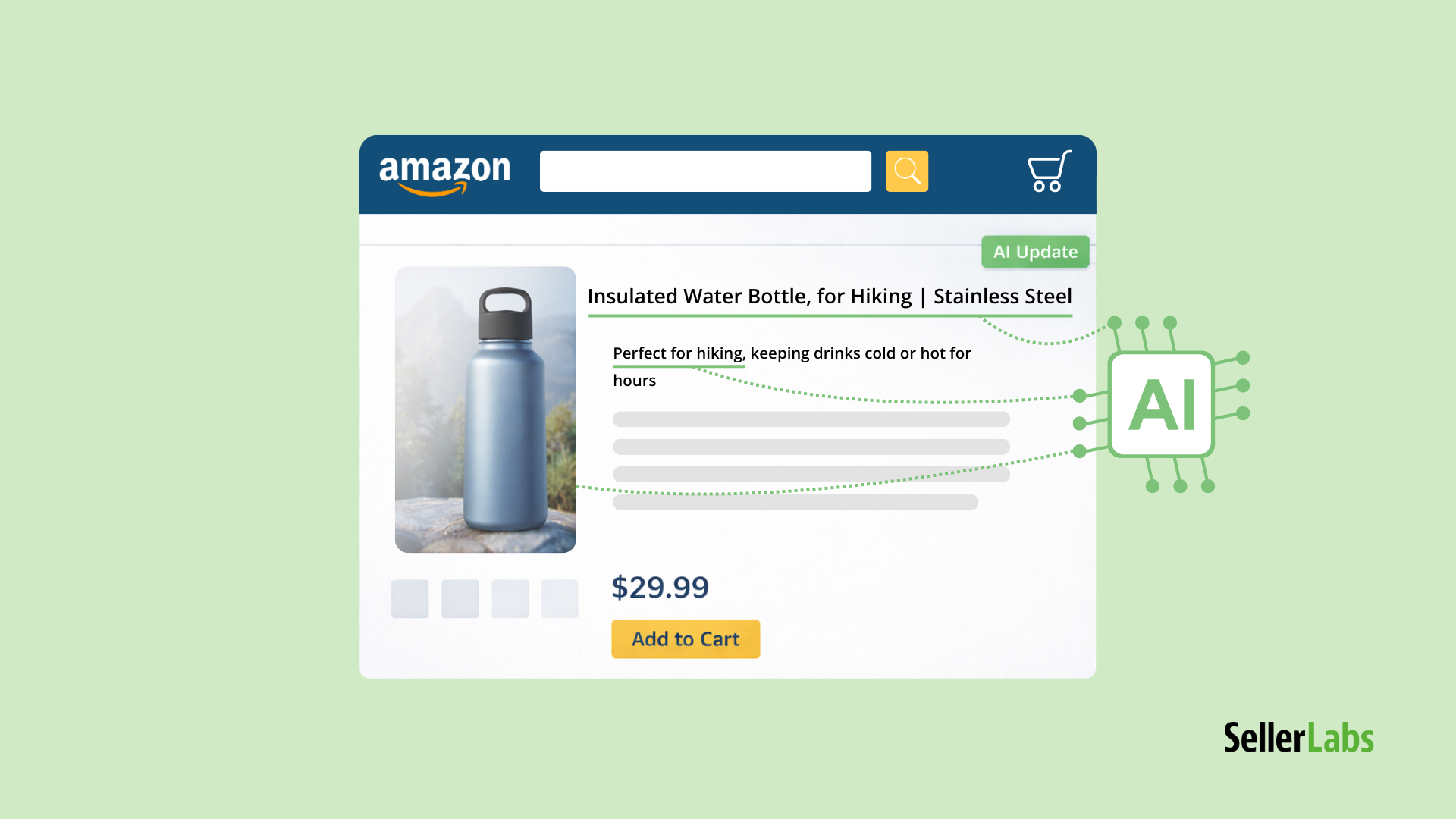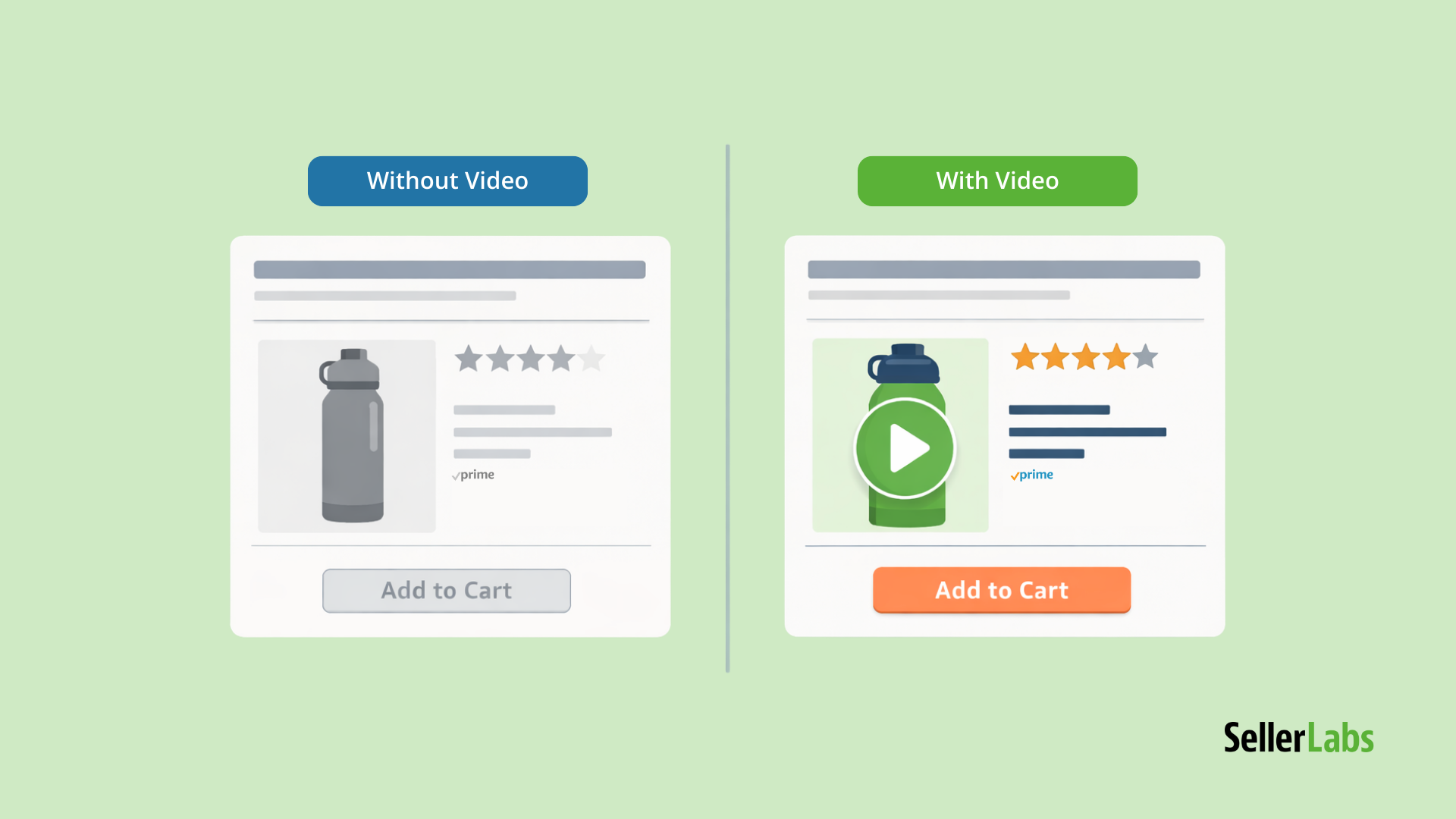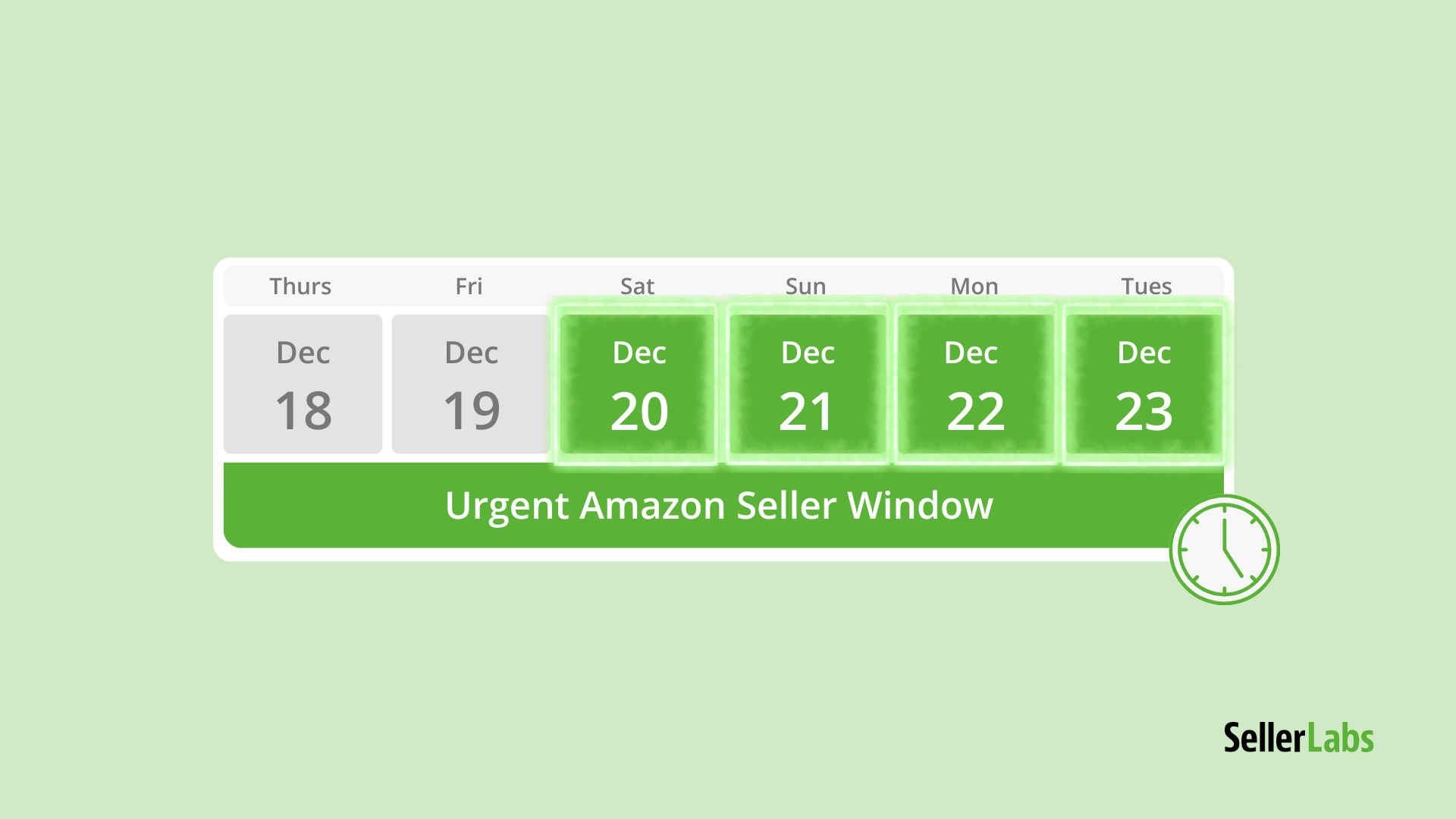One of the most frequently asked questions we get about Amazon Sponsored Products is, “Why are there ASINs in my Amazon Sponsored Products search terms reports?” This question arises whenever we explain how Automatic Targeted campaigns work and show excerpts from a search terms report. We’ve spent a good deal of time experimenting with Sponsored Products and have been able to come up with an answer.
Why You Find ASINs in Search Terms Reports
In the image below, you can see four ASINs that appear as a Customer Search Term from this Automatic Targeted campaign. The highlighted fields are the ASINs of other products where this ad was shown.

But why do ASINs appear instead of keywords? In order to understand how this happens, let’s dig a bit more into how Amazon constructs a search term report.
How Amazon Constructs a Search Term Report
If a buyer goes to Amazon.com and they search for “apple slicer,” you’ll notice that Sponsored Products ads are displayed at the top, bottom and right-hand side of the page. Every time Amazon shows one of those ads, it gets counted as an impression for the search term entered. If a user clicks on one of them, it then gets counted as a click.
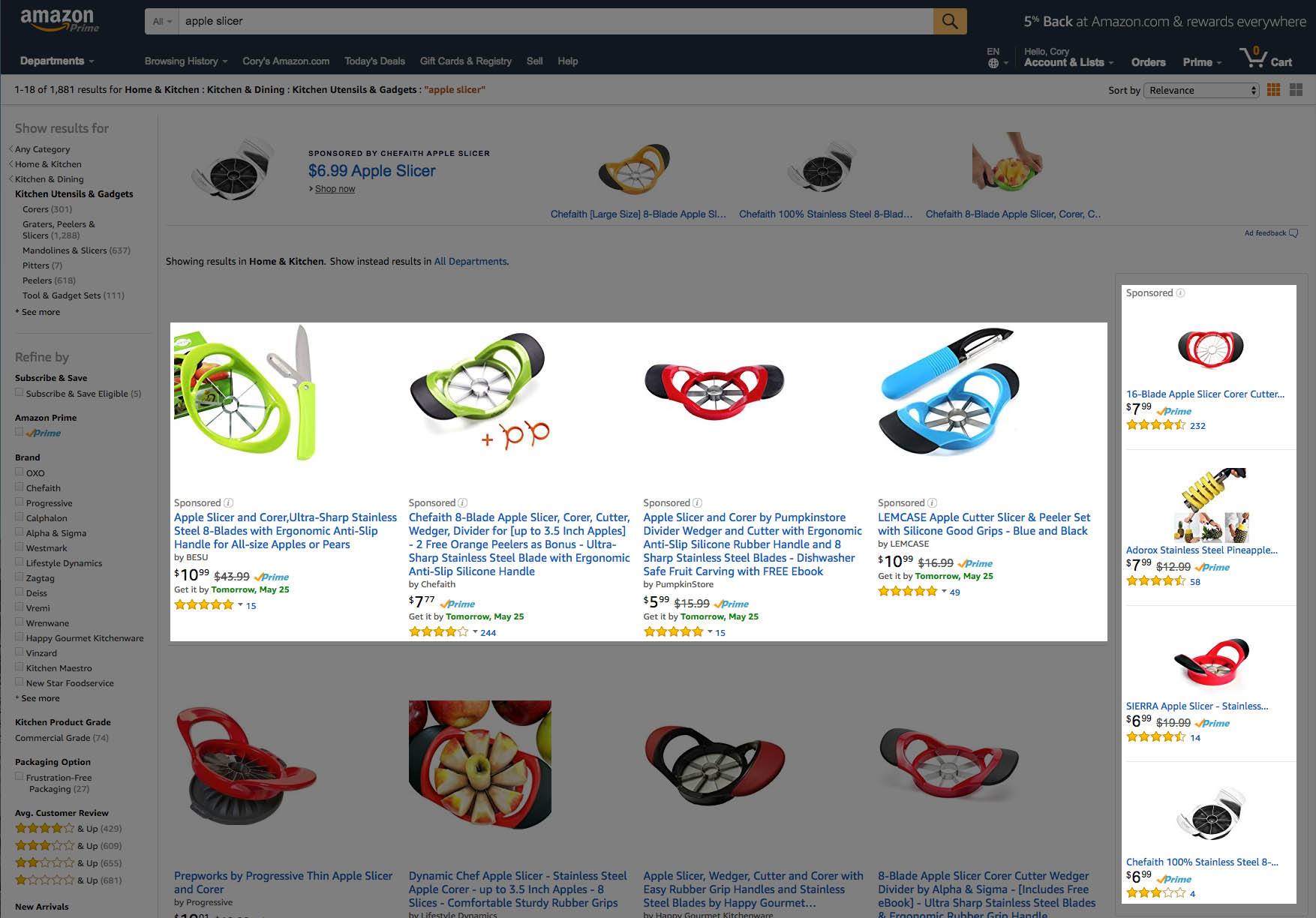
Go a step further and click on one of those ads and examine the URL of the next page. You’ll see a URL like the ones below. Note the bolded keyword “apple+slicer” in the URL:
(From an ad at the top)
https://www.amazon.com/8-Blade-Slicer-Divider-Alpha-Sigma/dp/B01A63UIXY/ref=sr_1_1?s=kitchen&ie=UTF8&qid=1491438770&sr=1-1-spons&keywords=apple+slicer&psc=1
(From an ad on the right side)
https://www.amazon.com/dp/B01NBMLI80/ref=sxr_pa_click_within_right_1?pf_rd_m=ATVPDKIKX0DER&pf_rd_p=2957865762&pf_rd_r=DNQ5T19G34H04B3AXP4V&pd_rd_wg=dcZxv&pf_rd_s=desktop-rhs-carousels&pf_rd_t=301&pd_rd_w=gsvo7&pf_rd_i=apple+slicer&pd_rd_r=YFDS1P9R9M980E3AFKV0&psc=1
On the product detail page, you’ll notice a couple of things. First, the search term “apple slicer” is already entered into the search box. This means the product detail page you just searched for remembers you. Also, notice on the same product detail page, that more Sponsored Products ads are being displayed. Since Amazon knows the search terms the visitor used to find that product detail page, the ads displayed on the page are also attributed to the “apple slicer” keyword. Meaning, if your ad was shown here, the impression and click would get assigned to the “apple slicer” search term.
That explains how the real user search terms get populated but it doesn’t explain yet why the ASINs show up in the search terms report. For this part, you need to consider statistics from SimilarWeb. The stats show that more than half of the traffic comes from referral links, organic search, social shares, email and other sources.
One source could be a detail page like this:
https://www.amazon.com/Calphalon-Easy-Apple-Corer-Slicer/dp/B000SOAT0Y/ref=sr_1_1?s=home-garden&ie=UTF8
Note that those links usually don’t contain keywords. Whenever traffic comes from one of those external sources to a product detail page—and does not originate from a search on Amazon.com—Amazon will still show Sponsored Products ads on the page. But without a search term to reference, the Sponsored Products system needs to tie that impression to something else. In these cases the search term displayed in the report is the ASIN on the product detail page that was shown.
Moving Forward
Armed with this knowledge, you can start to make some inferences about your competitors’ traffic sources. If your product is getting a lot of impressions and clicks from a competing ASIN, this is probably a good indication that their product receives a lot of traffic from external links. One popular Sponsored Products strategy is to take the ASINs found in the Search Terms report and search for them on Amazon to see if the ASIN is an actual product. From there, you could use our keyword research tool, Scope, to see what keywords the ASIN ranks for. This can give you terms you may not be currently using.
Those sources might include things like:
- Organic (Google, Bing, etc) search results
- Amazon Associate (affiliates) websites
- Social media including Facebook, Youtube, Twitter, and others
- Content from any other websites such as price comparisons, product reviews, etc.
- Other non-search related pages on Amazon
- Amazon’s various emails to buyers
What else can you learn about these ASINs in your search term report? Comment below if you have some other ways to use the data.

